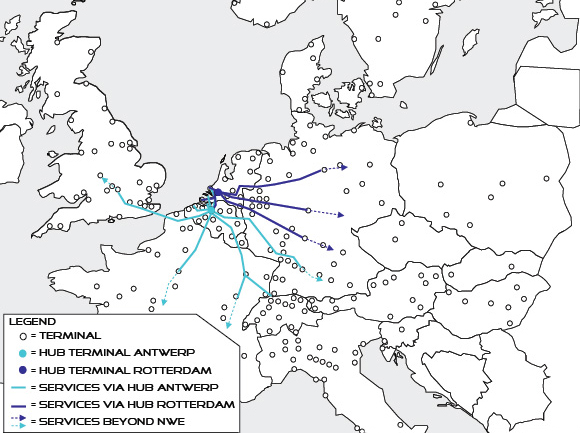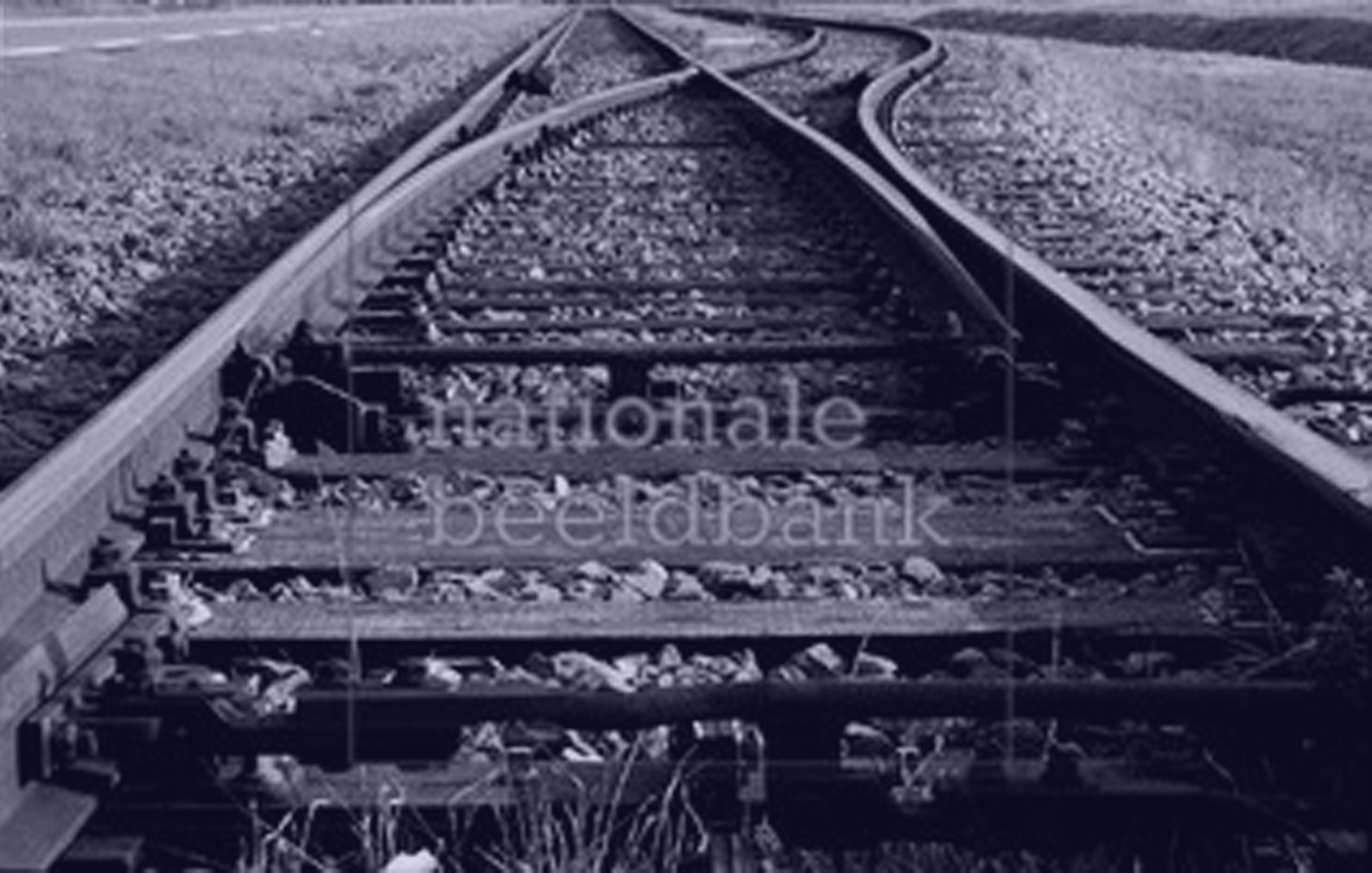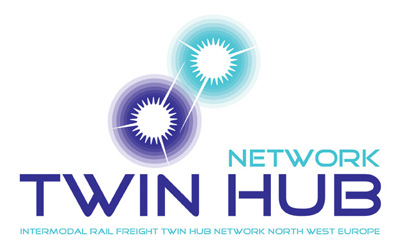Twin Hub concept
Aim
Objectives
Aim
The aim of the project is to make intermodal rail freight transport within, to and from North West Europe more attractive and to increase its competitiveness. This creates the conditions needed to shift flows from road to rail making transport more sustainable, regional accessibility more robust, regions more competitive, and increasing territorial and economic cohesion within Europe.
Objectives
The central configuration in achieving this aim is the Intermodal rail freight Twin hub network for North West Europe (= Twin hub network). It connects seaports in the Zeebrugge-Amsterdam range with inland terminals in for instance Germany, France and the UK.
Its implementation and the achievement of related performance improvements are the main project objectives. The envisaged performance improvements are:
Concept
- larger trainloads;
- higher service frequencies;
- a higher network connectivity;
- a better utilisation of the rail infrastructure (derived from larger trainloads).
- promising networks which could be implemented in the short to long term;
- a specific network that the project intends to implement in the short term by means of a pilot.
It is initially envisaged that the Twin hub network will be implemented in the rail hinterland transport of the sea ports of Rotterdam and Antwerp. The core idea of this particular network is that Dutch containers (intermodal load units) can be put onto Antwerp trains wherever they have or could have a strong market position (e.g. southern corridor). In addition, Belgian containers could be put onto Rotterdam trains wherever these are or could be strong in the market (e.g. north-eastern corridor). Smaller seaports can also be part of the network: they can be connected by train to the hinterland rail services of the two large seaports. The Twin hub network enables containers to be transported in joint rather than separate trains between inland terminals and the seaports in the Amsterdam-Zeebrugge area.
The bundling of the mentioned flows takes place by means of hub-and-spoke networks. Rail-rail nodes (terminals or shunting yards) in or near Rotterdam and Antwerp serve as hubs. The operational core is a batch of trains starting at different rail terminals of the involved seaports and simultaneously meeting at a hub. Each train approaching the hub has loads for several inland terminals. At the hub they exchange containers after which each train continues its journey with containers for only one or possibly two inland terminals. During its journey a container visits only one hub, either Antwerp or Rotterdam. A batch consists of 2 to 8 trains. The Twin hub network eventually consists of many hub-and-spoke batches.

The bundling of the mentioned flows takes place by means of hub-and-spoke networks. Rail-rail nodes (terminals or shunting yards) in or near Rotterdam and Antwerp serve as hubs. The operational core is a batch of trains starting at different rail terminals of the involved seaports and simultaneously meeting at a hub. Each train approaching the hub has loads for several inland terminals. At the hub they exchange containers after which each train continues its journey with containers for only one or possibly two inland terminals. During its journey a container visits only one hub, either Antwerp or Rotterdam. A batch consists of 2 to 8 trains. The Twin hub network eventually consists of many hub-and-spoke batches.

- More information on the logic of the Twin hub concept
- More information on the innovative aspects of the Twin hub concept




